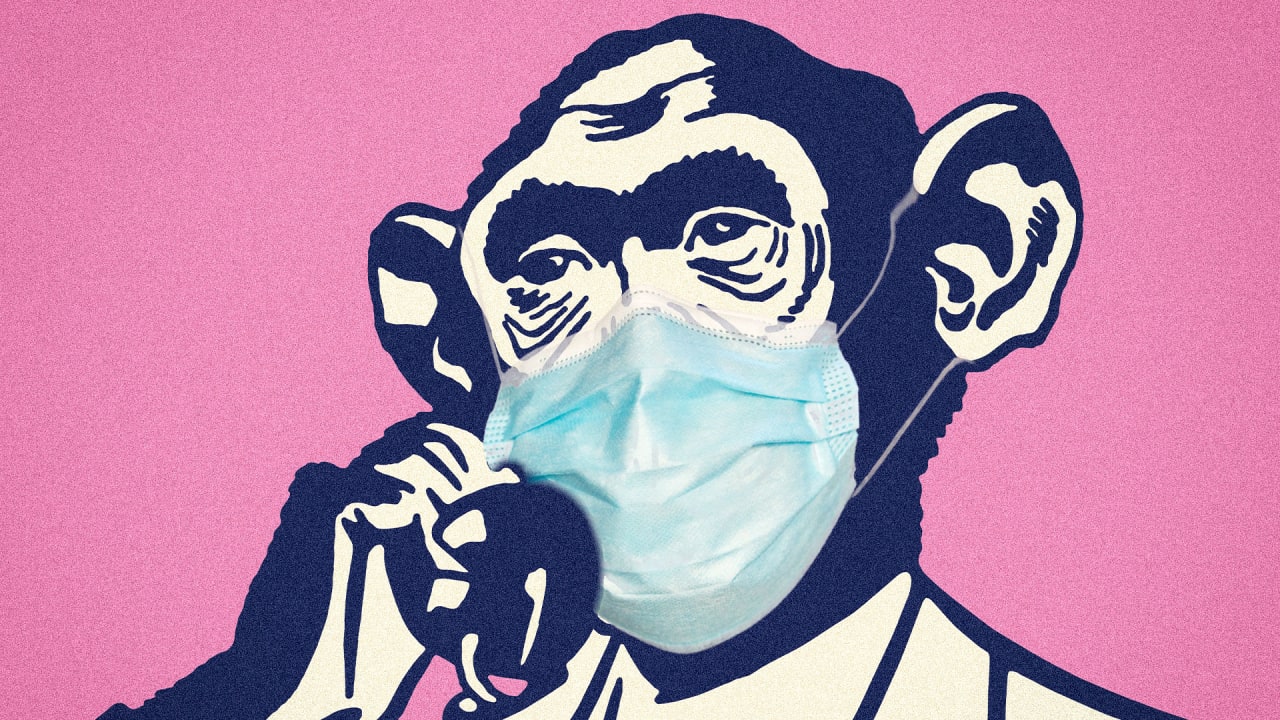
Two weeks ago, you could have mentioned monkeypox to people, and they’d likely have thought you were cluing them into an up-and-coming thrash band. Today, the viral illness is fast becoming a concern for people who are still weary from the COVID-19 pandemic.
It started on May 7, when an individual from Europe, who had traveled to Nigeria (where monkeypox is endemic), was confirmed to have a case. Since then, over 20 cases have spread through England, Portugal, and Spain. In Canada, officials are investigating 15 possible cases in Montreal, reports the New York Times. On Wednesday, the first U.S. case was confirmed in Massachusetts, with six other people now being monitored for potential exposure.
After the horrors of COVID-19, the thought of a new virus running amok is practically incomprehensible. (The CDC, it’s important to note, is not particularly concerned.) Still, if you’re unfamiliar with monkeypox, here are a few things to know.
What is monkeypox?
First discovered in 1958 in monkeys that were kept for research (which is where it got its name), monkeypox is a viral disease that’s most commonly found in Central and Western Africa.
The disease can spread through contact with animals, infected people, and bodily fluids. It can also be spread through respiratory droplets, but only in close settings.
The first human case was reported in 1970 in the Democratic Republic of the Congo. The CDC notes the “natural reservoir of monkeypox remains unknown. However, African rodents and nonhuman primates (like monkeys) may harbor the virus and infect people.”
What are the symptoms of monkeypox?
Monkeypox symptoms are a lot like smallpox. After an incubation period of 7 to 14 days (or, in some cases as few as 5 days and as many as 21), patients experience fever, headache, muscle aches, a backache, chills, and exhaustion. One to three days after they contract a fever, patients develop a rash with lesions.
The illness typically lasts two to four weeks.
The main difference, symptom-wise, between monkeypox and smallpox is monkeypox patients also experience swollen lymph nodes.
Is monkeypox fatal?
It can be. In Africa, the fatality rate for people who contract the disease is about 10%. A different strain, which doctors in the United Kingdom have identified as the one infecting people in that country, has a 1% fatality rate.
Both are significantly lower than smallpox’s 30% fatality rate.
Is there a vaccine for monkeypox?
Smallpox vaccines have proven effective at warding off monkeypox—and governments are stocking up. Biotech company Bavarian Nordic announced on May 18 that the U.S. placed a $119 million order and has the option to buy $180 million more if it wants. An unidentified European country has also secured a contract to obtain the vaccine.
The U.S. order will convert existing smallpox vaccines into freeze-dried versions, which have a longer shelf life. The converted vaccines will be manufactured in 2023 and 2024, the company says.
Should I be worried about an outbreak?
Not at this point. Human-to-human transmission is rare, but it is possible with prolonged face-to-face contact with an infected person. Other methods, the CDC says, include direct contact with body fluids or lesion material, and indirect contact with lesion material, such as through contaminated clothing or linens.
It’s extremely unlikely anyone in the U.S. or Europe will come into contact with an animal infected with the virus.
That said, the CDC is urging healthcare providers to be on alert for patients who have rash illnesses that are consistent with monkeypox, since the disease has shown up in countries that normally don’t report cases.
When is the last time monkeypox was in the U.S.?
There were two one-off cases in 2021. In November, a person who went to Nigeria and returned to the U.S. was infected with the disease. And in July, another U.S. citizen was confirmed positive.
But the last major outbreak was in 2003, when there were 47 confirmed and probable cases in six states. That outbreak came after people were in contact with pet prairie dogs who were infected after being housed near imported small animals from Ghana. None of the cases were from human-to-human contact.
What’s different this time?
Researchers are still trying to determine how the disease has shown up in several different countries. And the U.K. reports that the cases are predominantly showing up in men who have sex with men. That has raised the possibility that monkeypox could be transmitted sexually at this point.
“We are particularly urging men who are gay and bisexual to be aware of any unusual rashes or lesions and to contact a sexual health service without delay if they have concerns,” said Dr. Susan Hopkins, the U.K. Health Security Agency’s chief medical adviser, in a statement.
How rare is monkeypox?
Generally, very rare. “Most clinicians in America will never see a case in their lifetimes,” Johns Hopkins’ Tom Inglesby told the Washington Post. And because the virus’s effects are so visible, it should be much easier to contain than COVID-19. Still, health officials say they’re looking for more information about the links between the current cases now, such as whether the disease is spreading independently or via human networks.


